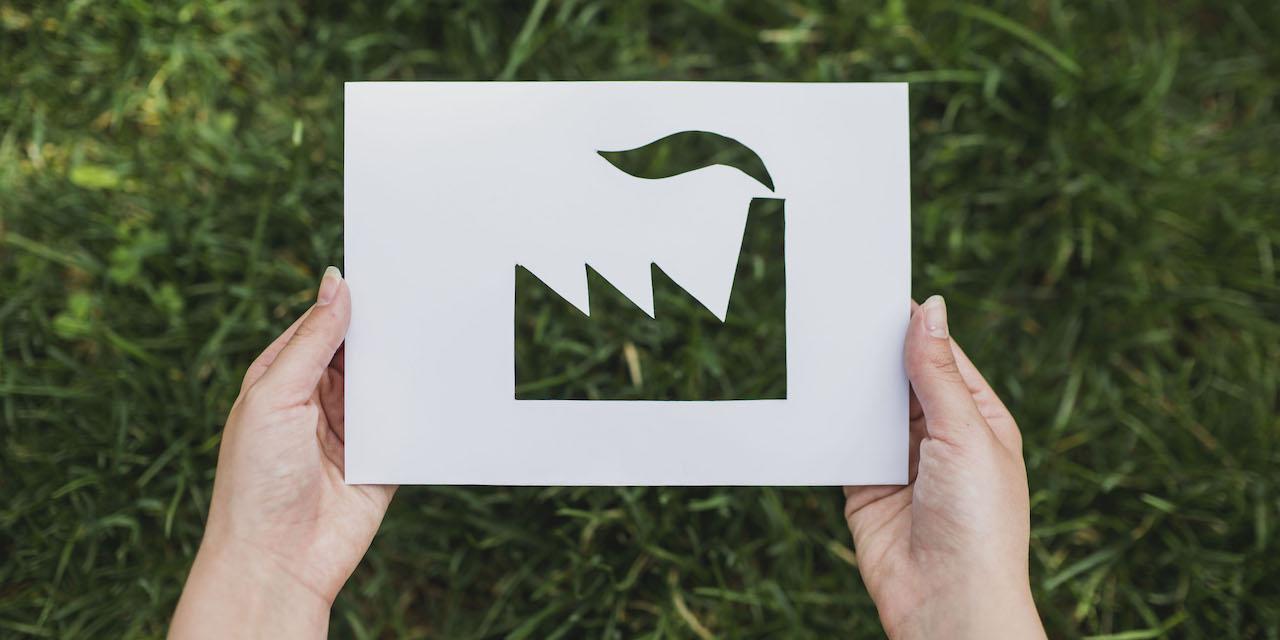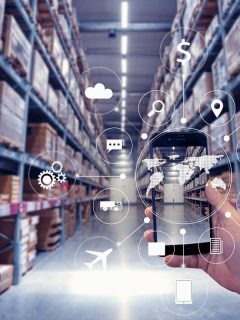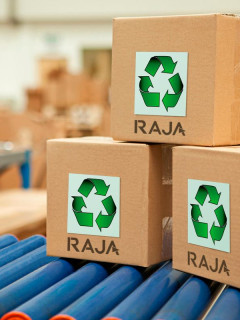Driven by legislation and customer expectations in terms of respect for the environment, companies’ logistics departments are increasingly concerned about their environmental impact.
How can they reduce their carbon footprint? How can they favour materials with a low ecological impact? These questions are increasingly being asked by the logistics departments of companies of all sizes. The ISO 14001 standard can be used to certify that your entire company is adopting an environmentally responsible approach.
Of course, the logistics department has an important role in achieving this certification, but to what extent? Find out what you need to know about ISO 14001 certification as a logistics manager.

What is ISO 14001 certification?
The ISO 14001 standard is international, and defined by the world standardisation organisation (ISO for International Standard Organisation) which groups together about 140 countries.
This standard is a reference framework for integrating environmental concerns into the activities of an organisation or company. This standard therefore applies to any type of organisation that implements effective solutions to control its impact on the environment, and thus reconciles the imperatives linked to its operation with respect for nature.
It is a recognised standard that helps organisations to take a holistic view and control their environmental issues such as
- Resource use
- Waste management
- Air pollution
- Water and sewage problems
- Soil contamination
- Climate change mitigation and adaptation
In doing so, this standard gives the organisation that holds it real advantages:
- A guarantee of compliance with current and futurelegal and regulatory requirements on environmental responsibility.
- Improved corporate reputation and increased stakeholder confidence.
- Competitive and financial advantage through increased efficiency and reduced costs.
- Achievement of strategic business objectives defined with environmental issues in mind.
Achieving ISO 14001 therefore demonstrates a comprehensive strategy for your company that addresses environmental as well as business concerns.

How to obtain this ISO 14001 certification?
Obtaining ISO 14001 certification requires following a complete process, which includes 5 steps. What are they? Answer here, in a few key points.
Take stock of your company’s environmental impacts
The first step, before embarking on an eco-responsible approach, is of course to determine the environmental impact of the company and its activities. This inventory gives you a general view of the issues that may arise in obtaining certification.
At this stage, you observe the impact of each of your actions, on a daily basis, and in great detail. In terms of logistics, you can look at..
- The energy consumption of your warehouse
- The management of your transport system
- The impact of your packaging on the planet, as we will see below
Carrying out an environmental audit of the company (with or without an external body)
More in-depth than the inventory, the audit can be carried out by an external body or by members of your company. It allows you to pinpoint problems that have an environmental impact.
In addition to highlighting problems, the audit is primarily intended to propose corrective actions to improve your company’s performance.
Define a sound environmental policy
From the audit, you need to define an environmental policy and objectives to achieve in order to qualify for ISO 14001.
A good environmental policy will inevitably include an impact on the logistics department, which has a big role to play in reducing the carbon footprint or using more environmentally friendly materials.
Identify priority actions to reduce your environmental impact
Once you have decided on a general policy, you need to identify priority actions, which are usually either simple and quick to implement, or more stringent, but very effective in reducing environmental impact.
These priority actions will be followed by those that are of less immediate interest, but which will improve the organisation’s performance over time. In short, to obtain ISO 14001 certification, it is important to take it one step at a time: your eco-responsibility cannot be built in one day!
Passing the ISO 14001 certification
ISO 14001 certification is not like taking an exam: it requires a 3-year process and must be carried out by a certification body accredited by the French accreditation body.
The application for certification to ISO 14001 requires two types of audits:
- The certification body will carry out an initial full audit of your environmental management system to check the company’s compliance with the requirements. This audit lasts between 2 and 4 days depending on the situation.
- Follow-up audits at regular or irregular intervals are then carried out for two years to define the conformity of the system.
How can logistics packaging participate in this certification?
As you read through these 5 key steps, you can see that your company’s logistics division has an important role to play in the process of achieving ISO 14001.
To help your company achieve certification, consider adopting new habits such as..
- Choosing eco-friendly packaging: this can be biobased or made from recycled materials such as plastic pallets, or the logistics division can choose to replace plastic with more environmentally friendly materials (recycled and recyclable cardboard, kraft tape instead of plastic, etc.).
- Reduce the use of raw materials related to packaging: adapting the size of containers allows you to limit the use of cushioning materials, and therefore your environmental impact. For this, variable-height boxes are very suitable, as they can be modulated according to the size of the product being sent. It is also possible to use innovative cushioning materials, which limit the quantity needed in packaging, such as paper cushioning or air-cushioning.
- Better waste management in the warehouse: installing a selective sorting system in the warehouse and, by extension, throughout the company, is a must in the implementation of your eco-responsible approach. The process may take some time to adapt and train your operators, but it is worth it!
- Reduce the weight-volume of parcels sentby choosing packaging that is as close as possible to the size of the goods to be shipped, the logistics department mechanically reduces the volumetric weight of the packaging, avoiding the use of cushioning materials. By reducing the empty space in your parcels, you also reduce the empty space in the transport containers, and indirectly reduce your company’s carbon footprint. This will help you to obtain the ISO 140001 standard.
It is worth noting that in addition to helping the company to achieve certification, these good habits undoubtedly play a role in the perception that your customers will have of your company. There is nothing but good to come from switching to more eco-responsible logistics!

The example of RAJA and its ISO 14001 certification
In June 2011, RAJA was awarded ISO 14001 certification, which is great news and reinforces the eco-responsible spirit of the company, which has driven the teams since its creation in 1954!
Here are some of the actions that have been put in place to meet this challenge:
- An environmentally friendly purchasing policy: we work with producers who respect European environmental regulations and legislation, and we buy mostly products created in Europe.
- An offer that always includes an eco-responsible alternative. Most of our products are available in a “green” version, for a catalogue that respects the planet. Moreover, this same paper catalogue comes from sustainably managed forests and is printed by IMPRIM’VERT printers: a little extra that proves our commitment to the detail.
- A reduction in our environmental impact in our warehouse and at headquarters: sorting, control and reduction of waste, reduction of energy consumption, reduction of the quantity of consumables… In our ecological commitment, every detail counts.
You are aware of this: your logistics and packaging division has a major role to play in achieving ISO 14001 certification. By adopting good habits, you can significantly improve the company’s environmental performance.
Don’t wait any longer: start looking at packaging and its environmental impact immediately by applying the 5Rs method in your logistics strategy!















